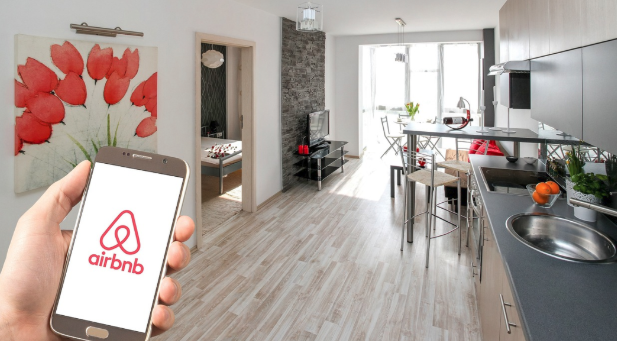When you’re planning a real estate development project, getting the numbers right isn’t just about projecting rent or estimating construction costs. The money you use and how it’s structured, can make or break your project.
This structure is called the capital stack, and it’s one of the most important elements in a real estate development financial model.
Understanding how the capital stack works will help you protect your investment, reduce risk, and attract the right partners. In this guide, we’ll walk through what the capital stack is, how each layer works, and why it matters when modelling your development project.
What Is the Capital Stack?
The capital stack is the combination of funding sources used to finance a real estate development. It lays out who puts money into the deal, how much they put in, and in what order they get paid back.
Think of it like a financial layer cake. Each layer comes with a different level of risk and return. The higher up you go, the more risk you take—but also the more potential reward.
In a standard real estate development financial model, the capital stack includes:
-
Senior debt
-
Mezzanine debt
-
Preferred equity
-
Common equity
Each layer comes with its own terms, repayment order, and return expectations.
Senior Debt: The Base of the Stack
Senior debt is usually the largest part of the capital stack. This comes from banks or other lenders in the form of a mortgage or construction loan. It’s called “senior” because it gets paid back first.
Banks are cautious. They want collateral and a steady plan for repayment. Because of that, senior loans usually have:
- Lower interest rates (typically 5–8% depending on market conditions)
- Fixed repayment schedules
- Strict covenants
Loan-to-cost (LTC) ratios for senior debt often fall between 50%–70% in the U.S. for ground-up development. For example, if your total project cost is $20 million, a lender might offer $12–14 million in senior debt.
In your model, this portion lowers the need for equity but increases your fixed costs due to interest and principal repayments.
Mezzanine Debt: Filling the Gaps
Once you max out your senior loan, there may still be a funding gap. This is where mezzanine debt comes in. It’s riskier than senior debt because it gets paid back after the bank, but before any equity holders.
Mezz lenders don’t usually get a lien on the property. Instead, they may take an equity pledge—giving them the right to take control of the project if payments are missed.
Terms often include:
- Higher interest rates (typically 10–15%)
- Balloon payments or interest-only structures
- Shorter terms (2–5 years)
Mezzanine debt is common in markets like New York, LA, and Miami, where project sizes are large and competition for equity is high. It increases leverage but also adds pressure to hit performance targets.
In your real estate development financial model, you’ll need to model this layer carefully. You should account for both its cost and how it affects your returns and risk profile.
Preferred Equity: The Hybrid Layer
Preferred equity sits above debt but below common equity in the stack. It’s not a loan, but it behaves a bit like one.
Investors in this layer don’t get fixed repayments. Instead, they earn a preferred return, usually 7–12%, before any profits go to common equity holders. In return, they take on more risk than debt holders, but less than common equity investors.
Preferred equity is a useful tool when:
- You don’t want more debt on your balance sheet
- You want to keep control of the project
- You’re targeting investors who want steady, lower-risk returns
This layer is often used in multifamily and mixed-use projects where the risk profile is moderate. Your model should clearly define how preferred returns accrue and whether they’re cumulative or paid periodically.
Common Equity: The Risk Takers
At the top of the capital stack is common equity. This is the riskiest money in the deal, but also the most flexible. Common equity holders only get paid after all other obligations have been met but they also enjoy the upside if the project performs well.
As the developer, you’ll usually be in this layer, along with friends, family, or venture partners. Common equity returns often exceed 15–20% IRR, depending on the deal structure and market.
Here’s where modeling becomes crucial. Your real estate development financial model should break down:
- Contributions and ownership percentages
- Profit-sharing structures (e.g., 70/30 splits after preferred returns)
- Promote structures (e.g., the developer gets an extra share after hitting certain IRR hurdles)
This layer drives your return and control. It’s also the hardest to raise since it carries the most risk.
Why Order Matters
The order of repayment matters more than you might think. Let’s say your project doesn’t hit expected profits. Senior debt still gets paid. Mezzanine lenders may enforce their rights. Preferred equity holders might walk away with a modest return. But common equity? That’s where losses start.
That’s why the capital stack is more than just a funding breakdown—it’s a risk map. It tells you who gets paid and when. And more importantly, it tells investors how likely they are to get their money back.
Building the Capital Stack in Your Model
When adding the capital stack to your model, make sure you:
- Use clear assumptions: interest rates, return hurdles, contribution amounts
- Align draw schedules: debt and equity contributions often follow different timelines
- Reflect cash flows: show when and how each layer gets repaid
- Stress test: use sensitivity analysis to model upside and downside scenarios
Here’s a simple structure you might use in a $10 million project:
| Layer | Amount | % of Total | Return Type |
| Senior Debt | $6,000,000 | 60% | 6% interest |
| Mezzanine Debt | $1,000,000 | 10% | 12% interest |
| Preferred Equity | $1,500,000 | 15% | 10% return |
| Common Equity | $1,500,000 | 15% | Residual gains |
This setup balances risk, improves returns, and keeps your financing flexible.
Trends You Should Know
Capital stack trends shift with the market. In 2024 and early 2025, rising interest rates and tighter lending standards have made traditional financing harder to secure. Developers are turning to alternative lenders and joint venture equity to fill the gap.
In cities like Austin, Phoenix, and Charlotte, construction loans are covering less than 60% of costs. That’s a big drop from the 70–75% seen just a few years ago. This puts more pressure on the upper layers of the stack—especially preferred and common equity.
Also, more investors are demanding institutional-quality models. That means your capital stack presentation needs to be clear, complete, and defendable.
Tools to Model the Capital Stack Accurately
If you’re not comfortable building it from scratch, it’s worth using a proven financial model template. A strong model should already include structured inputs for each capital layer, waterfall logic, and scenario testing.
The templates from Financial Models Hub are a great starting point. They’re designed for real estate developers and include built-in capital stack breakdowns that help you visualize and customize your financing.
Getting the Stack Right Matters
Your capital stack isn’t just a math problem. It’s the financial engine behind your entire development. The right mix can unlock a project that otherwise wouldn’t get built. The wrong mix? It can bury a great idea under a mountain of payments and investor stress.
By building your real estate development financial model with a strong understanding of the capital stack, you give your project a better chance to succeed.
If you want to model your next project with clarity and confidence, start with a professional-grade template from Financial Models Hub.



